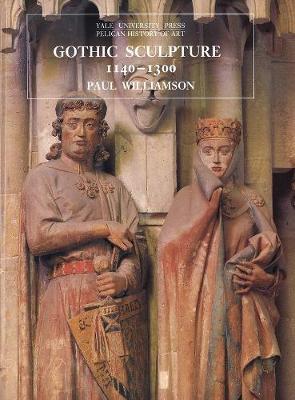The Yale University Press Pelican History of Art
1 total work
This lavishly illustrated book is the first to examine the development of Gothic sculpture throughout Europe. It discusses not only the most famous monuments—such as the cathedrals of Chartres, Amiens, and Reims, Westminster Abbey, and the Siena Duomo—but also less familiar buildings in France, England, Italy, Germany, Spain, and Scandinavia.
Paul Williamson begins by setting the sculptures of the cathedrals in their social context. He then focuses on the working methods of the sculptors, illustrating the stages of making Gothic sculpture with a number of previously unpublished examples. Moving from country to country, Williamson traces the transition from Romanesque to Early Gothic style and then examines the flowering of "mature" Gothic in the early thirteenth century and in the less well-known sculptures of the last half of the thirteenth century. Throughout, he includes descriptions of wood sculpture, so often neglected by others, and he sheds new light on figures and reliefs in bronze and ivory.
A synthesis of new research, interpretations, methodologies, and insights that have evolved over the last twenty years, the text is accompanied by hundreds of illustrations, including many photographs taken specially for the book. Together the text and illustrations provide a strikingly beautiful and authoritative survey for students and the general reader.
Paul Williamson begins by setting the sculptures of the cathedrals in their social context. He then focuses on the working methods of the sculptors, illustrating the stages of making Gothic sculpture with a number of previously unpublished examples. Moving from country to country, Williamson traces the transition from Romanesque to Early Gothic style and then examines the flowering of "mature" Gothic in the early thirteenth century and in the less well-known sculptures of the last half of the thirteenth century. Throughout, he includes descriptions of wood sculpture, so often neglected by others, and he sheds new light on figures and reliefs in bronze and ivory.
A synthesis of new research, interpretations, methodologies, and insights that have evolved over the last twenty years, the text is accompanied by hundreds of illustrations, including many photographs taken specially for the book. Together the text and illustrations provide a strikingly beautiful and authoritative survey for students and the general reader.
